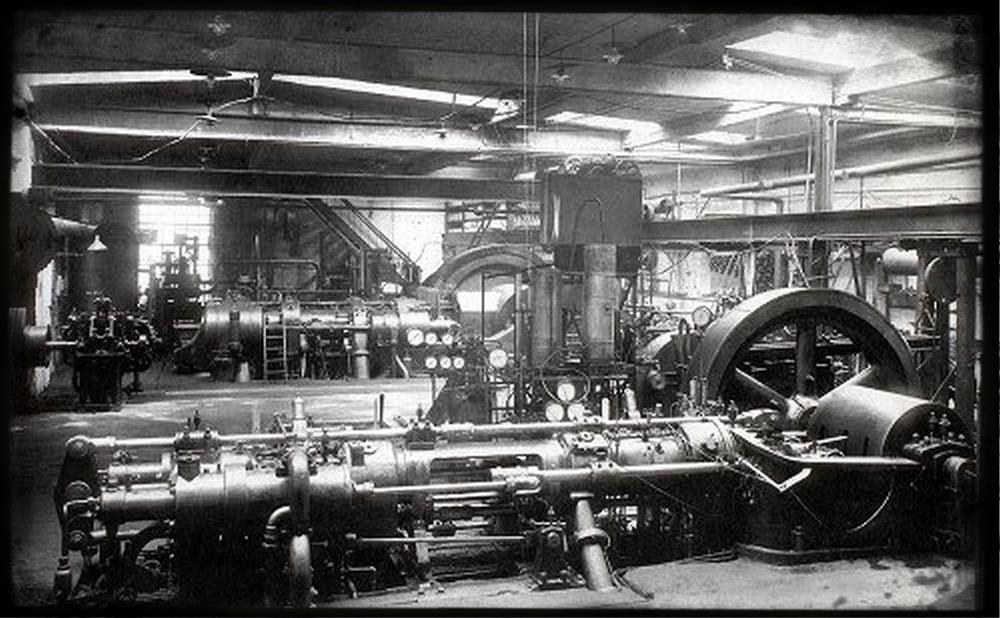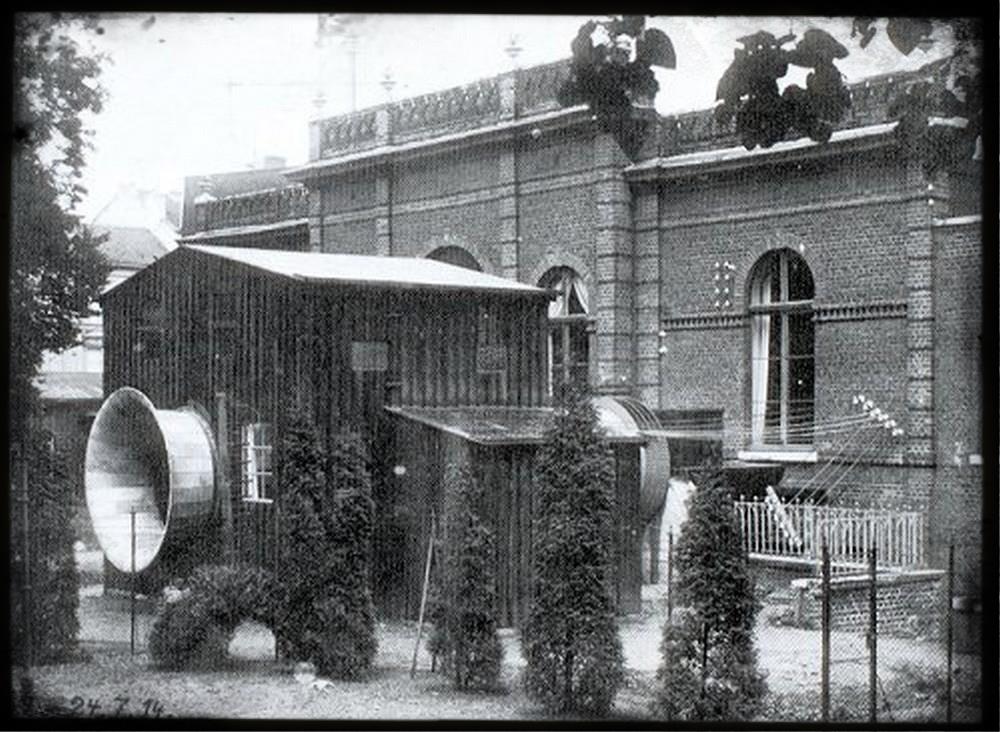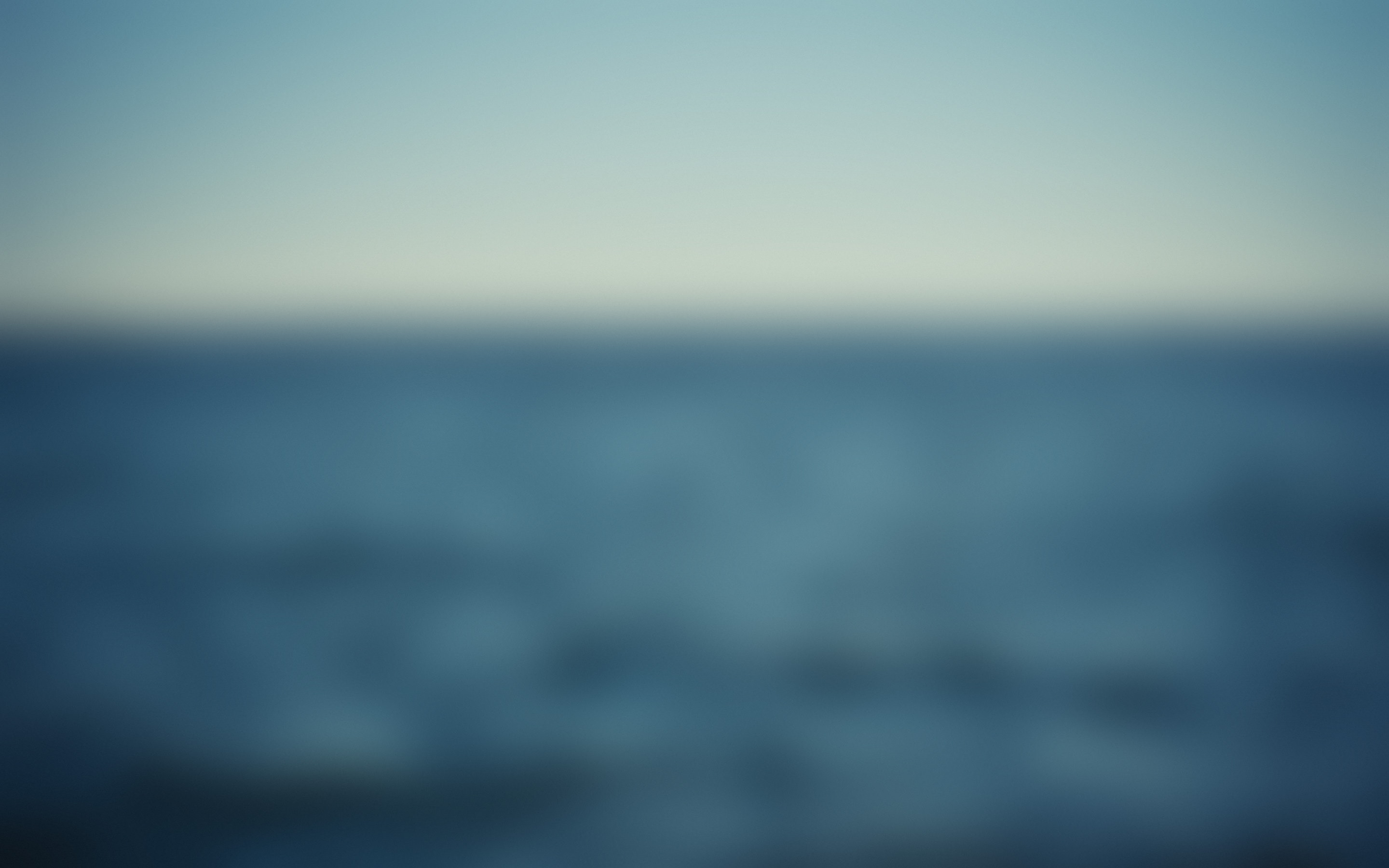Versuchsanstalt fuer Oelmotore
(later Versuchsanstalt Prof. Junkers, Aachen)
See also Engines at the Versuchsanstalt fuer Oelmotore
 Founded:
Founded:
1897 Versuchsanstalt Prof. Junkers (Oct. 1897)
1899 Construction Office for Warm Water Stoves (Nov. 1899)
1902 Versuchsanstalt fuer Oelmotore (Experimental Institute for Oil Engines, Oct. 1902)
1907 Versuchsanstalt Prof. Junkers (absorbing the above offices)
1919 Prof. Hugo Junkers, Versuchsanstalt, Aachen (May 1919)
Main Business:
Research of Warm Water Stove Designs (since 1899)
Research of oil engines (since 1902)
The relation between the research institutes and other Junkers companies
was based on license agreements
Management Positions:
1899-1901Walter Bennhold, head of Construction Office for Warm Water Stoves
1911 Dr. Hayo Folkerts, head of Construction Office Ship Engines at Aachen
1915 Dr. Otto Mader, head of the Research Institute Prof. Junkers at Dessau.
1919 Wilhelm Scheller, head of Prof. Junkers, Experimental Laboratories, Aachen
Facilities:
a) Experimental Laboratories Prof. Junkers, Aachen
1907 Koenigsstrasse 29, Aachen
1897/1914 Frankenburg, Aachen (wind channel)
also Boxgraben 52, Aachen
also Brabantstrasse 64, Aachen
In October 1897 founded the "Versuchsanstalt Prof. Junkers" as his initial research institute in Aachen. A small group of engineers worked at his private home at Boxgraben and later at the Frankenburg.
In 1899 the "Construction Office for Warm Water Stoves" was founded within the Versuchsanstalt. This office was headed by Walter Bennhold. It was focused on questions of water stove designs, which later could be used at Junkers + Co. for serial productions. The relation between the Versuchsanstalt and ICO was based on license agreements.
In October 1902 the "Versuchsanstalt fuer Oelmotore" was founded at Aachen for the research of large scale oil engines. This Versuchsanstalt was headed by Wilhelm Scheller. Junkers and Scheller continued the research work on engine designs, which had been stopped, after Hugo Junkers had left the "Versuchsanstalt fuer Gasmotore" of Oechelhaeuser. The initial research engine was the M11, which became available in 1904. The numerous designator "11" was the continued counting of the previous "Versuchsanstalt fuer Gasmotore".
In 1907 the "Versuchsanstalt fuer Oelmotore" was integrated into the Versuchsanstalt Prof. Junkers as a departement. Here Scheller continued the developement of the M12, which ran first in 1909 and following oil engines. In May 1911 the first license agreements for Junkers oil engines were contracted. Until 1913 all developement works were performed for license sales to foreign companies. In 1913 Junkers Motorenbau was founded as a production factory in Magdeburg. Since then, several developements were realized at Magdeburg also on an internal license based agreement.
The utilization of oil engines in different applications were under research since the beginning of the 20th century. In September 1903 the first diesel oil powered ship was built in France. When the Junkers built oil engines got more and more reliability, Junkers was also studying the diesel oil engine applications in shipping construction. Since 1911 the Versuchsanstalt Prof. Junkers was also engaged in the research of ship engines. A special Construction Office S for ship engines was inaugerated and headed by Hayo Folkerts. Already in 1911 a total of 5 license agreements were made by the Versuchsanstalt. Further three contracts were signed in 1912. For a list of all known license built Junkers engines, see here.
With the breakout of WWI all oil engine developements came to a sudden end, as all oil fuels were strictly requested by the German Army. Also the German shipping companies stopped their operations and contacts to license partners outside Germany stopped, so that Junkers had no further chances for gaining experiences with his ship engines. On the other hand a lot of military requests were addressed to Junkers for his ICO facility, which had to change their production for military purposes. Therefore all oil engine developements were stopped at the Versuchsanstalt in August 1914 and also the Magdeburg facility was closed in September 1914.
Probably during the developement of the Reissner Ente Hugo Junkers also started to think about initial Aircraft Engine Designs within the Versuchsanstalt. Already in 1909 two small gasoline engines were designed at the Versuchsanstalt, the M13/M14 and in December 1911 Junkers advised Scheller to design a light gasoline aircraft engine of 100 to 200 hprs. In December 1913 the Versuchsanstalt ordered the M27 at Jumo Magdeburg for experimental design tests of a future aircraft engine. But the construction work on that engine was also stopped with the breakout of WWI.
While there was little need for ship engines in Germany during WWI, the Department S of the Versuchsanstalt remained closed during the war period. However, Junkers turned all capacities from this department into the direction of an aircraft engine and already in December 1914 the Mo 3 design was sent to Magdeburg for construction of that first Junkers aircraft test engine. Further developments of the Versuchsanstalt finally led to the first usable aircraft engine Fo 2 in 1917.
While the Versuchsanstalt Aachen was mostly concentrated on engine design questions, it played only a minor role in the area of aircraft design. During the early Reissner phase Hugo Junkers was mostly focused on the utilization of metal constructions of this aircraft. Most of the practical construction questions therefore were discussed with the ICO workshops at Dessau, even when the Versuchsanstalt Aachen was responsible for the assembly. Also, when Hugo Junkers became more interested in aerodynamical fields, Reissner and Junkers performed these researches mostly with their institutes of the TH Aachen, where a first windchannel was built on request of Junkers in 1910. When Hugo Junkers left the TH Aachen, he built an own windchannel at his private home at the Frankenburg in Aachen. Since 1914 parts of the Versuchsanstalt Aachen were engaged in several aerodynamical researches here under the management of Phillip von Doepp. These activities laid the foundations for the future Junkes aircraft designs. At the same time numerous structural studies for a future aircraft design were undertaken at ICO in Dessau. It became obvious for Junkers, that the separation of the practical workshops in Dessau and the scientific research staff in Aachen became an obstacle. Therefore staff of the Versuchsanstalt Aachen were transfered to Dessau for the further developement of the Junkers J1 and finally the complete aircraft design competence was handed over to Dessau, where in 1915 the Forschungsanstalt Prof. Junkers was founded. 
Versuchsanstalt Aachen, Windchannel of 1913 at Frankenburg
The Versuchsanstalt Aachen further concentrated on questions of aircraft engine design. But with the upcoming questions of the engine integration into an aircraft, also the aircraft engine developement became more and more a Dessau theme. At least during the final developement phase of the Fo2 in 1920 tests were already performed in Dessau and not longer in Aachen, which means, that the aircraft engine developement was moved from Aachen to Dessau shortly after the end of WWI. The Fo2 returned to Aachen for a short while, when the restrictions upon Germany's aircraft industry required to destroy the Fo2 due to its power rates. The Fo2 was stored at Aachen from May 1921 to May 1922. When the restrictions were dropped by the Allies, the Fo2 and the complete Versuchsanstalt staff, which was responsible for aircraft engine designs were moved to Dessau.
By 1922 only a small team of engineers remained at the Versuchsanstalt Aachen, which still was working in the field of stationary and ship engines. The main purpose of the Versuchsanstalt Aachen was now the commercial handling of license rights on the Junkers opposed piston engines. On 30th May 1919 the Versuchsanstalt Aachen became an offical commercial organisation and was added to the Aachen Commercial Register as Prof. Hugo Junkers Versuchsanstalt Aachen. Wilhelm Scheller again became head of this Versuchsanstalt since June 1919. Several ship engine developements, which had been started during the war period, were finished in 1919 and 1920 at the Versuchsanstalt. Also Scheller promoted studies of a free piston engine and improvements of the fuel injection technique. The prewar cooperation with Doxford in England was reinitiated by the Versuchsanstalt and an extensive license agreement for a large number of ship engines were signed by both sides. In 1923 initial designs for a stationary double piston engine were started at the Versuchsanstalt Aachen, which opened the way towards the later socalled "Haubenkolben" HK-engines. These HK-engines were later produced in large numbers for a lot of different application fields. With the foundation of the Junkers Motorenwerke at Dessau most Aachen activities came to an end.
Patent Rights of the Versuchsanstalt Aachen:
A total of 93 patents were issued for Prof. Junkers at Aachen:
25 patents related to engine designs and processes
13 patents related to aircraft designs
1 patent related to ship designs
3 patents related to thermodynamic systems (i.e. Calorimeter)
27 patents related to warm water stoves
14 patents related to house techniques (heater, coolings)
7 patents related to tooling and equipment
3 patents related to production procedures and techniques
Further Links for Versuchsanstalt Aachen:
Frankenberger Viertel (German, photos of the Frankenburg)
introduced Aug 1996, transfered Dec 2017
http://hugojunkers.bplaced.net/
contents last updated 30 May 2004

